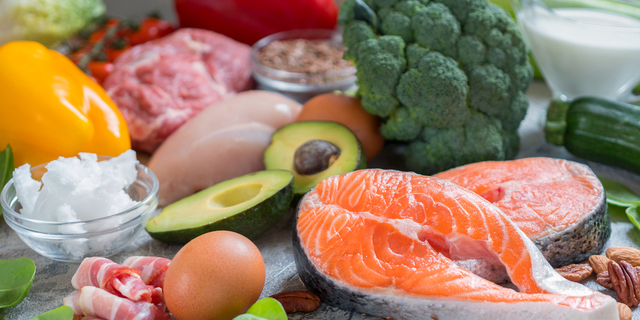
Sometimes it feels like most of our attention goes to refined sugar, starches and how to avoid them altogether. It’s also important – we should keep in mind – that much of the food we will eat on a typical day will inevitably have some starch and sugar in it. But what do we mean by starch and sugar? In the broadest possible sense, we mean carbohydrates – and fortunately for us, not all carbohydrates are created equal. Although there are many ways to divide carbohydrates, one of the most useful for our purposes is simple and complex. Simple carbohydrates are easy to digest and enter the blood relatively quickly, so they can raise your blood glucose levels almost immediately. Complex carbohydrates need some more digestion to make their way into your blood, so they’re less likely to cause the harmful long-term health effects associated with sugar spikes. The paleo diet is much broader than just recommending complex carbohydrates over simple ones, which is broadly accepted dietary advice anyway.
What is Paleo really?

The premise of the paleo diet is that the body can handle a mix of meats, fruits and vegetables, eggs, fish, and complex carbohydrates better than processed meats, refined fats, grains and simple carbohydrates because it evolved to eat the first category as hunter-gatherers. After all, without refined sugar and heavily processed foods like doughnuts, all our ancestors could eat was foods that were either eaten whole or prepared whole, like a roasted chicken or a whole carrot. As a tool to identify whole foods, the paleo diet is a convenient way to manage blood glucose levels, but the paleo diet is not exactly perfect. We certainly wouldn’t want to recommend eating only meat from animals you hunted – so be sure not to take things too seriously! Both rice and potatoes are better forms of starch than refined sugar, in terms of their effects on blood glucose levels. Similarly, a slab of steak cooked over an open fire is a better choice than a processed hamburger patty packed with salt and sugar.
Digging into Paleo
Pardon the archaeology pun – we promise it’s going somewhere. The paleo in paleo diet comes from the term paleolithic, which refers to the period in which humans learned to use stone tools. This means that it relates strictly to Homo habilis, the primate that first used tools, and not Homo sapiens, which developed later and of which all modern-day humans are members. More saliently for our purposes, the paleolithic period refers to a time before agriculture, including the cultivation of low-sugar vegetables and lean domesticated meats. If we take this to its logical conclusion, in the strictest possible sense, a fully paleo diet would mean excluding cultivated grains like buckwheat and quinoa, as well as legumes like beans and peas, which became widely cultivated long after the dawn of agriculture. The strictest regimens would even exclude sweet potatoes and vinegar, which can be helpful substitutes for far worse food choices and help control blood glucose levels. We think it’s best not to let the perfect be the enemy of the good!
As we’ve recommended some of the above foods, like buckwheat or vinegar, as a salad dressing instead of ranch, it’s tough to recommend a strict paleo diet without any reservations. One of our all-time favorites is unsweetened Greek yogurt, a high protein and low sugar dairy product that is incredibly filling and versatile. The only thing paleo about Greek yogurt with flax seeds would be the flax seeds! Similarly, a healthy and carbohydrate light bowl of Poke would not be considered paleo, depending on the small amounts of low-sugar dressings.
Picking and Choosing

The classic paleo diet may be a bit too strict for some individuals to follow long-term. Still, the basic principles behind it are a reasonable guidepost for a diet to control blood glucose levels.
What we can easily recommend are many individual foods that are part of the classic paleo diet. Just so long as they’re eaten as part of a balanced and low-sugar diet – which, fortunately, many of them already are! Our basic idea here is that painting with a broad brush is not a recipe for personal health – what may work for one person’s body may not work for another’s.
Some of our recommendations to include from the classic paleo diet:
– Roasted game like deer, elk, antelope, rabbit, wild duck
– Grilled wild-caught fish like salmon, haddock, tuna, rockfish, mahi-mahi
– Pasture-raised eggs
– Fresh whole fruits like grapefruit, lemon, avocado, blueberries, coconut
– Fresh whole vegetables like carrots, celery, onions, leek, endives
It can be a great goal to aim for the “80/20” rule here – aim for 80% of your diet being from a classic paleo template, and allowing 20% of non-Paleo foods that you enjoy. In this sense, we think “as close to nature as possible” is generally excellent advice.

